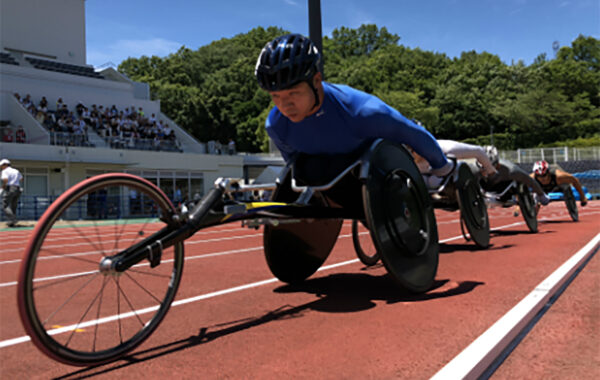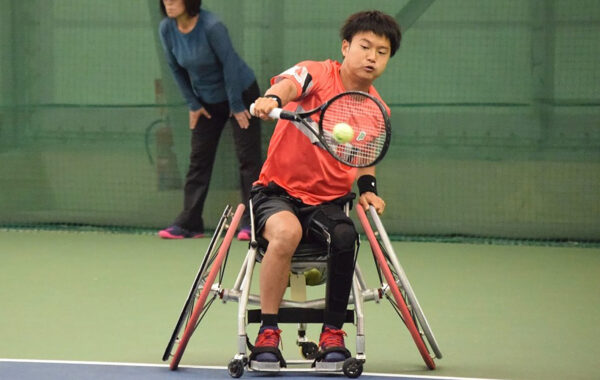ASOURCE®TIMES
障がい者スポーツへの関心の高まりとともに車椅子をはじめとする障がい者スポーツ用具の開発も進み、素材の多様化と加工技術の進歩によって高機能化している。2020年の東京パラリンピックでは、選手たちの脚となって活躍する競技用の車椅子と義肢にも注目してみたい。

競技用の車椅子は、日常で使う一般的な車椅子とは異なる形状をしており、それぞれの競技の特性に合わせて進化してきた。例えば、車椅子マラソンなどで使用される「レーサー」と呼ばれる陸上競技用の車椅子(写真1)。高速走行を可能にするため、車体には軽くて丈夫なアルミニウム合金やチタン合金のほか、近年は振動の吸収率が高いとされるカーボンファイバーも使われている。空気抵抗をより抑えるために前輪が前方に出た3輪が主流で、選手は脚を折りたたんで低姿勢のまま、ハンドリム(手でこぐときに持つ部分)を上から叩くようにして力を車輪に伝える。その結果、トラックでは時速30キロ、マラソンの下り坂では時速50~70kmに達するほどの高速化を実現している。
陸上競技用の車椅子

一方、テニス、バスケット、ラクビーなど競技用車椅子が一般的な車椅子と大きく異なるのは車輪の角度だ。一般的な車椅子のタイヤは地面に対して垂直だが、競技用はタイヤが「ハ」の字に傾く。これはターンやダッシュなどの動きに合わせて小回りがきくように設計されているからで、特に俊敏な動きを必要とされるテニス用は、他の競技用に比べて傾きが最も大きく約20度あるという(写真2)。また、体を大きく後ろに反らせてサーブしても倒れないように、車椅子の前後に小さな車輪が取り付けられているのもテニス用ならではの工夫だ。
バスケットやラグビーなど選手同士が激しく接触する競技用の場合は、前足の部分に防御用のバンパーが付いているのが特徴だ。なかでもラグビー用車椅子は装甲車のように頑丈に造られており、攻撃型と守備型の2種類がある。攻撃型は相手の守備に引っかからないようにコンパクトで丸みを帯びた形をしており、守備型は相手の動きをブロックするためにバンパーが飛び出ている。車椅子の形で攻守を見分けられると東京パラリンピックの観戦もより面白くなる。
テニス用の車椅子

競技用の義肢は、板を曲げたような形の陸上競技用の義足に象徴されるように独特の形状をしているものが多い(写真3)。これは選手の脚代わりとなり、「走る」「跳ぶ」「こぐ」などの動きを可能にするために作られているからだ。そのため、素材も進化しており、走行時には瞬間的に体重の8倍以上の負荷がかかる陸上競技用の義足の板バネは、航空機にも使われるカーボン繊維強化樹脂が使われている。反発力と推進力のある素材を用いたことで、走るだけでなく跳ぶことも可能になった。その超人的なパフォーマンスは観る者を楽しませてくれるが、健常者と競うことについては義足の有利性を問う声もある。
義肢の場合も競技の特性によって性能や素材は異なるが、いずれの義肢を装着する場合も「ソケット」と呼ばれる部品が必要になる。このパーツはユーザーごとに形状が異なり、ぴったりフィットさせるために細かく調整しなければならないことから3Dプリンタの活用が検討されている。また、最新の技術では、ロボット関連技術の発展に伴い、筋電義手・義足の障がい者スポーツへの応用も期待されている。
陸上競技用の義足

写真提供:株式会社エランシア